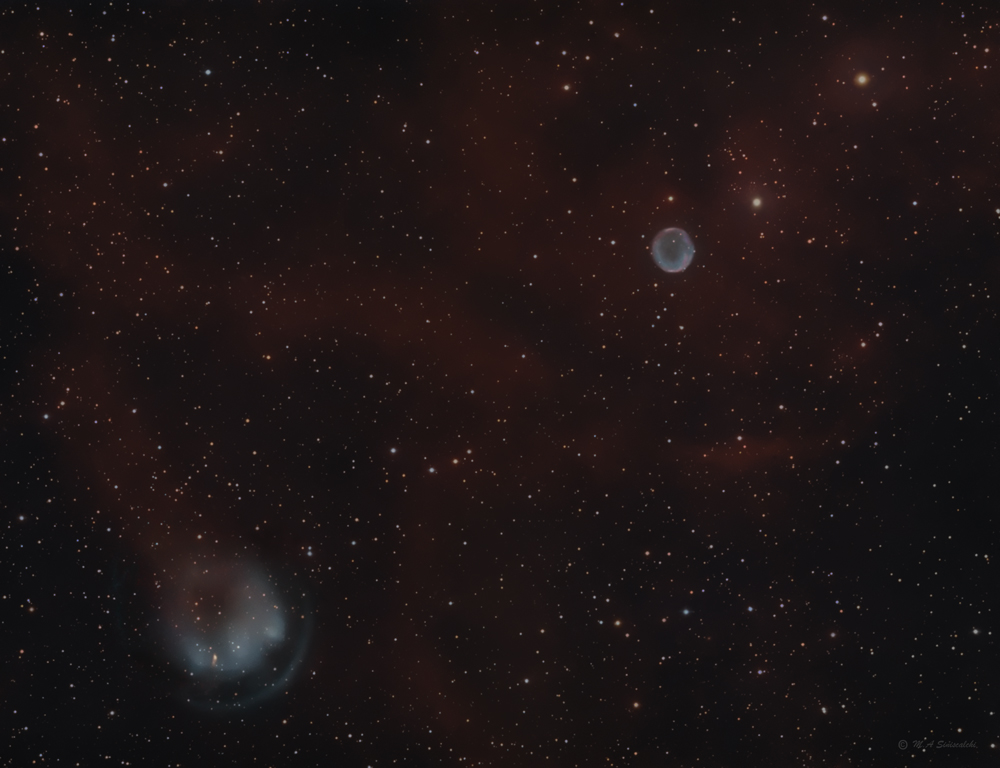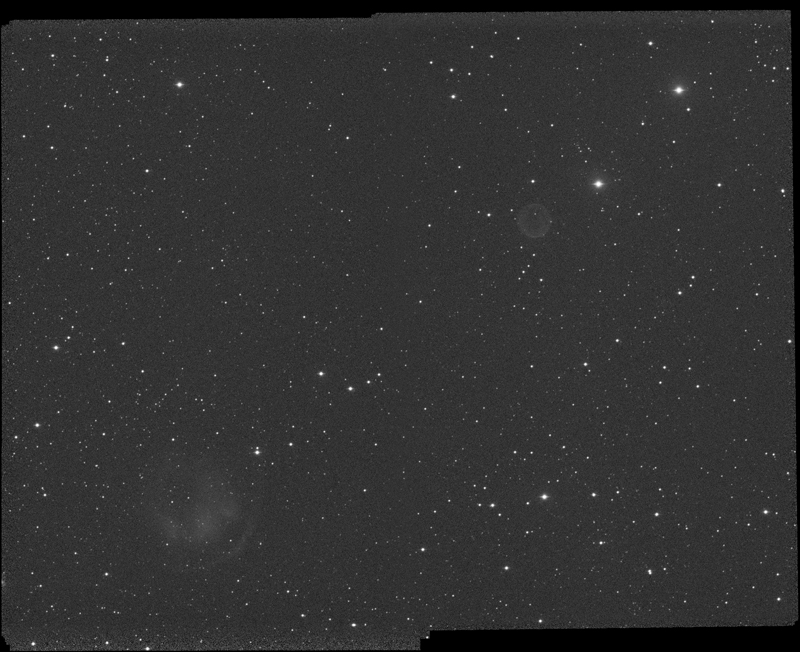© 2022 Michael A. Siniscalchi
Abell 6 & HFG-1
Planetary Nebulae in Cassiopeia
RA: 03h 00m 54s Dec: +64° 53' 21", Distance: 5,408 ly
Click on image for larger size.
This is a 2 panel bi-color mosaic of very faint planetary nebulae (PN) Abell 6 and HFG1 (Heckathorn-Fesen-Gull 1). Each channel of this mosaic has 8 1/2 hours of exposures each taken through 5nm Ha (Hydrogen alpha) & OIII (Oxygen) filters. Even with this amount of exposures, the image was still dim. Removing the stars using RC-Astro StarXTerminator was necessary to further stretch the image and applying noise reduction using Noise Ninja and Photoshops surface blur. Additional brightness was acheived by duplicating the layer and using Photoshops Linear Dodge (Add) mode to combine together resulting in a brighter image.
Abell 6 (PK 136+04.1), located top right, was first catalogued by George Abell in 1955 and is in close proximity to the larger HFG1 (PK 136+05.1) which was discovered in 1982.
The smaller Abell 6 PN is about 3 arc minutes in size and emits most of its spectrum in OIII and Ha, though both are faint. Its central 19th magnitude star can barely be seen.
The larger nebula HFG-1 is approximately 8.3 arc minutes in size and with the outer bow shock added, 15 arc minutes. This HFG-1 is formed from pre-cataclysmic binary star V664. This binary system is made of a large red giant and a smaller dwarf star in close proximity of a few million miles and rotating around each other within 14 hours. As this PN moves at high speeds through the ISM it produces the very visible bow shock as seen by the outer ring ahead of the main nebula body. Left behind is a field of excited hydrogen gas that is believed to be 10,000 years old.
Abell 6 position shown relative to our location (Sun) in the Milky Way Galaxy.
Galatic Longitude: 136.1
Galatic Latitude: 4.9
Distance from Galatic Plane:327 ly above the galatic plane
Above image and info provided by Our Galaxy 3D Atlas application and used with permission by
Otherwise
Initial 2-panel stretch of Hydrogen-alpha (Ha). Each panel is 500 minutes of total exposures.
Initial 2-panel stretch of Oxygen (OIII). Each panel is 500 minutes of total exposures.



